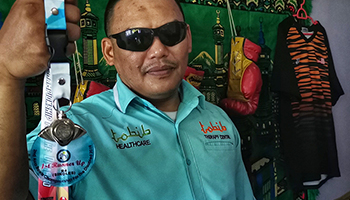Silk production and the ancient art of silk weaving have been around for centuries and originated in China.
It was confined to China until the Han dynasty opened trade in 130 B.C.E. and the Silk Road, the network of routes used by traders for more than 1,500 years, was utilised by merchants for the exchange of goods between Europe and East Asia. Silk became a major industry and one of China’s chief exports in the Han dynasty.
Silk weaving eventually made its way to Southeast Asia with many nations adopting their own styles and techniques; from the ikats of Cambodia and Thailand, to the golden songket of Indonesia and Malaysia, to the Philippine pina silk and the Burmese acheik — just to name a few. Sericulture, the rearing of silkworms and the production of raw silk, also grew in the many different countries.
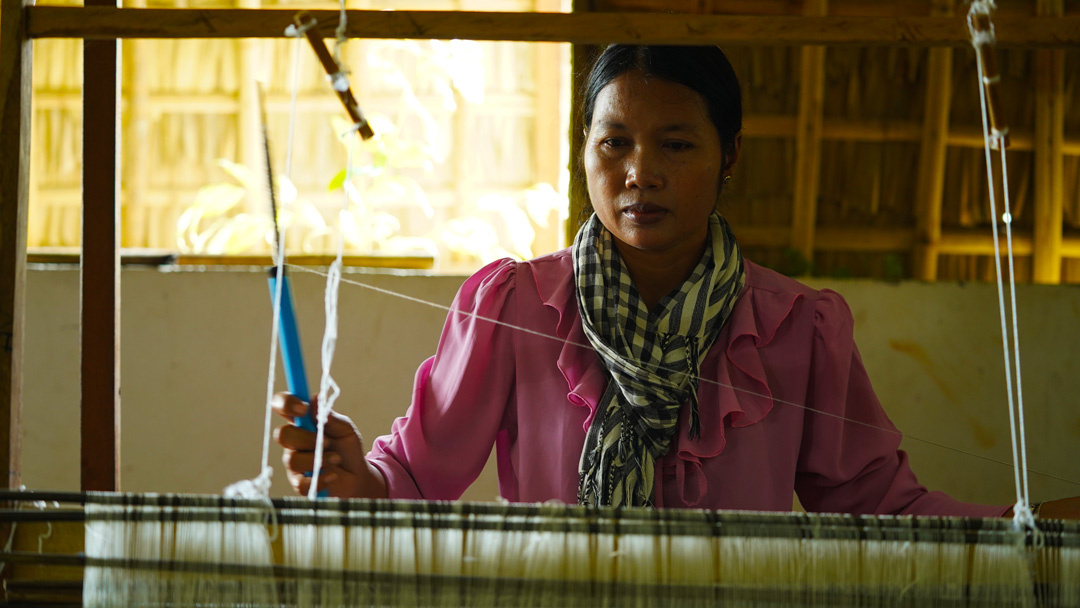
A weaver at work at her loom
While silk is still a popular textile, silk weaving artisans have had to compete with technology and factory-produced products that are undoubtedly churned out at a faster rate. This has taken its toll on weaving traditions, with skills and knowledge disappearing due to lack of interest and demand.
There has however been a revival in the art of silk weaving and sericulture. Non-governmental and aid organisations have identified the silk industry as a viable way to reduce poverty, improve livelihoods, and uplift communities. Apart from providing jobs to weavers, there is also a chain of cottage industries involved; from the farming of silkworms, to the spinning, dyeing and weaving of the product.
Maybank Women Eco-Weavers
Maybank Women Eco-Weavers is a programme by Maybank Foundation to promote the creation of new women weavers throughout the ASEAN region to uplift their lives and give them financial independence. This regional initiative promotes environmentally-friendly practices and the use of natural production materials while reviving the cultural heritage and sense of community for all those involved.
Cambodia’s rich weaving tradition had taken a large hit during the two decades of war and life under the Khmer Rouge regime. An industry that had employed 25% of the Cambodian population at its peak was virtually erased with the staggering loss of skilled artisans and knowledge. Maybank seeks to revive this culture.
With one silk weaving training centre already under its belt in Cambodia in Takeo province, Maybank has expanded the Maybank Women Eco-Weavers programme with the addition of a second centre which was officially opened early this year in the Siem Reap province. Located in Banteay Srey district, the centre has been operating since June 2020 but with the grand launch only happening recently due to the pandemic. It is expected to provide business opportunities and empower underprivileged women weavers and mulberry farmers (from which the leaves that the silkworms eat come from) to become financially independent.
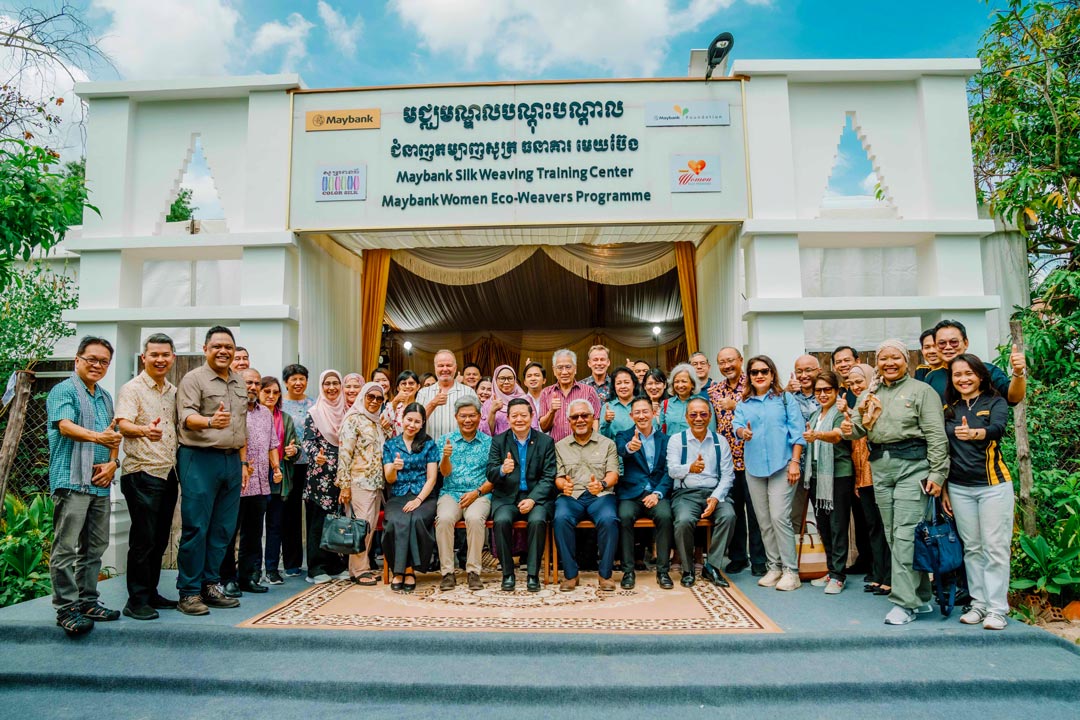
Maybank Chairman Tan Sri Dato’ Sri Zamzamzairani, ASEAN Secretary-General Dr Kao Kim Hourn, Cambodian Culture and Fine Arts Ministry State Secretary Pen Monimakara, Siem Reap provincial council member Nasiel Ismael, National Bank of Cambodia Deputy Director General Heng Bomakara, Women’s Affairs Ministry State Undersecretary Koung Sorita, Maybank President and CEO Dato’ Khairussaleh, Maybank Cambodia CEO Rath Sophoan, Maybank Chief Sustainability Office Shahril Azuar Jimin were amongst those in attendance at the launch of the new training centre in Siem Reap.
With the tireless efforts and commitment of programme partner, Color Silk, the training centre has already seen 178 weavers graduate. The centre serves as a platform for participants to receive vocational training as well as equip them with entrepreneurship opportunities. It specifically benefits economically disadvantaged young women who may be otherwise tempted to seek employment either in the city or abroad, in potentially harsh and unsafe labour conditions.
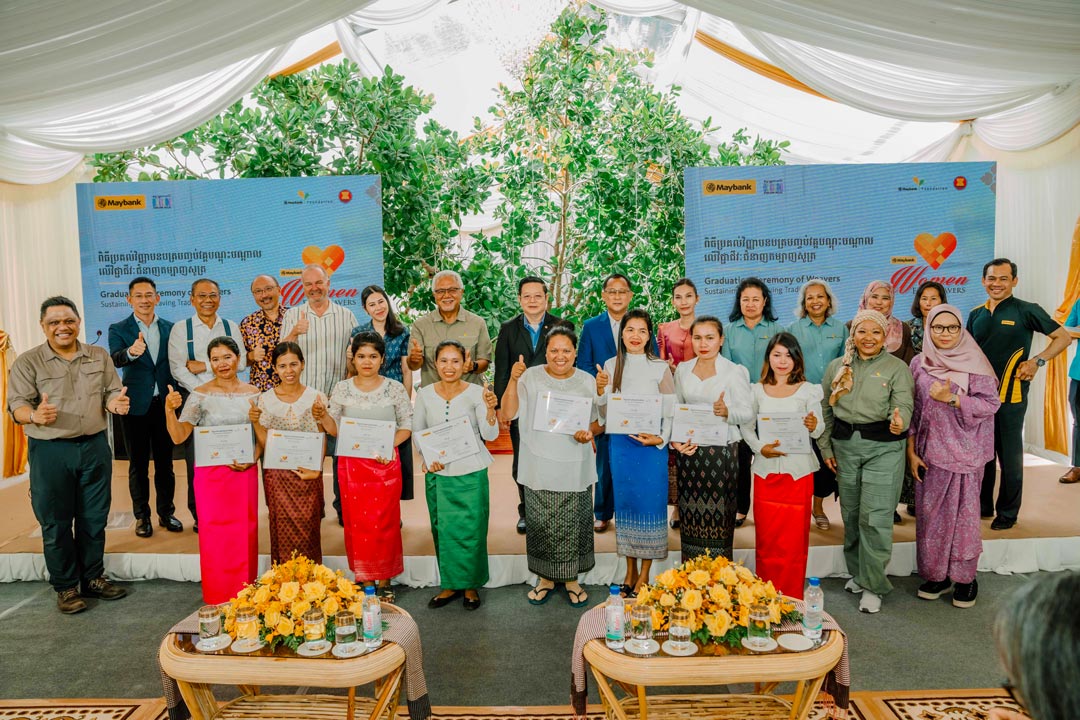
Maybank Management as well as honoured guests with some of the graduates of the Maybank Women Eco-Weavers programme.
The course equips 25 trainees at a time, over a 5-month training period facilitated by specialists. Upon graduation, the new community of women weavers will bring the weaving looms back to their homes and commence their new financially-independent journey.
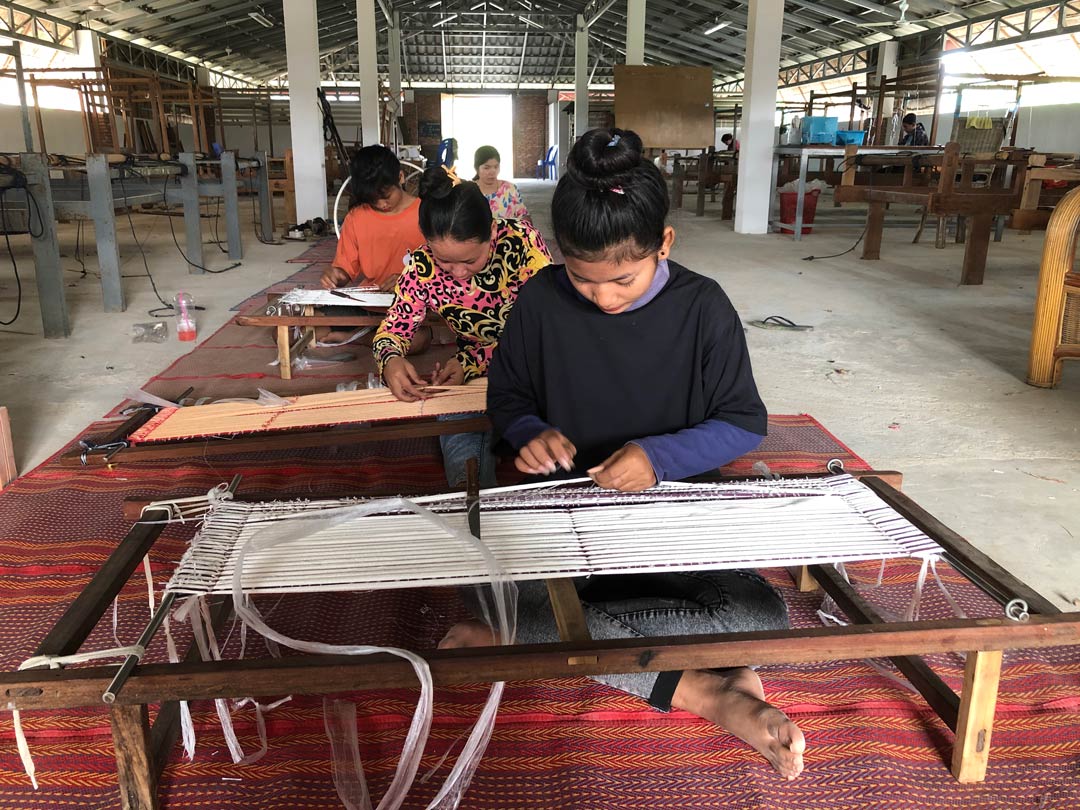
Participants of the Maybank Eco-Weavers programme weaving together.
To date, the Maybank Women Eco Weavers programme has trained 1,470 weavers and supported more than 1,300 farmers who have grown more than 340,000 mulberry trees. The programme is currently present in Laos, Cambodia, Malaysia and Indonesia.

